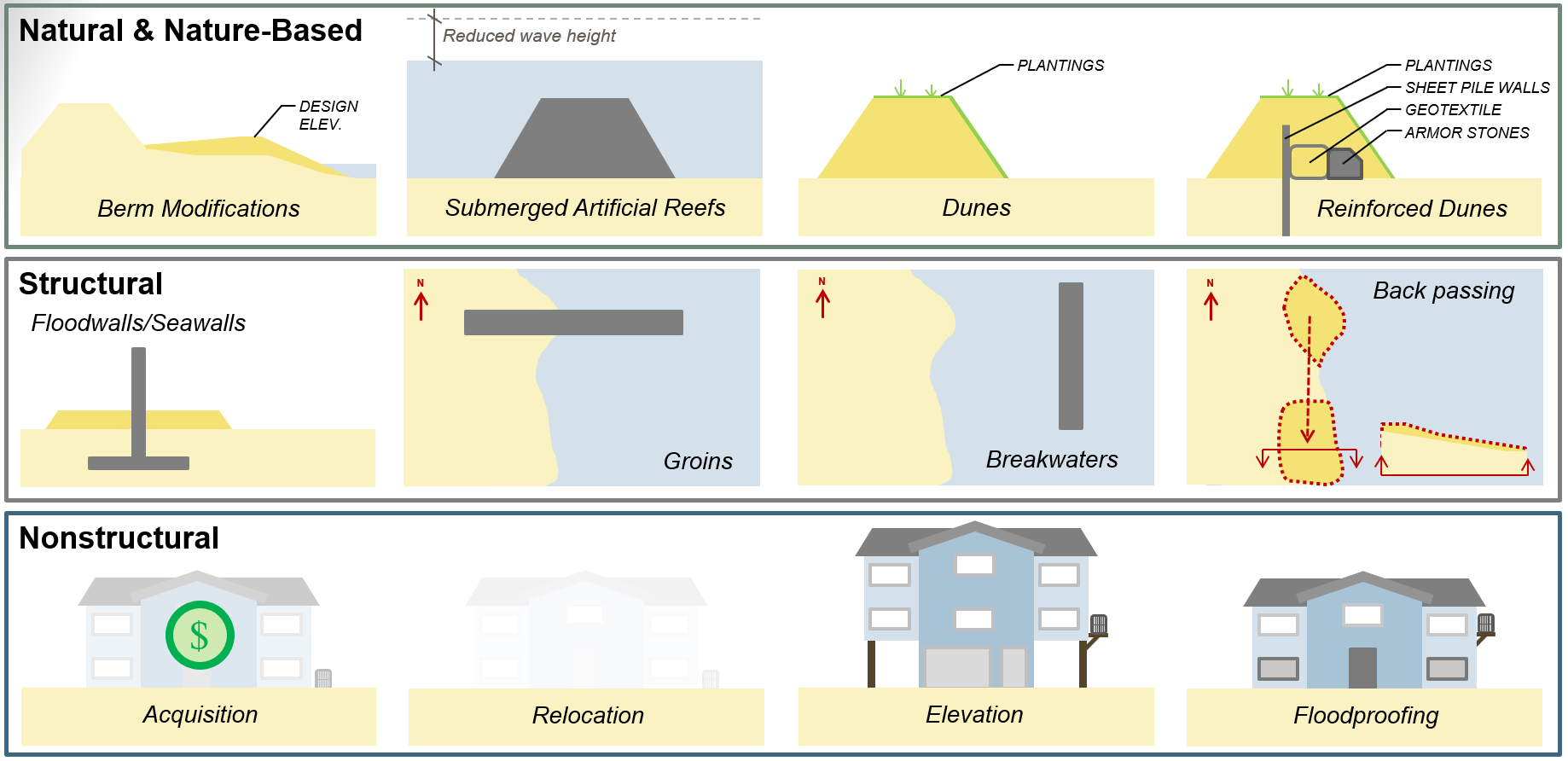DESCRIPTION: Historically, coastal storms have severely impacted the Atlantic Coast of New Jersey. In response to these storms, the US Army Corps of Engineers has implemented measures such as beach renourishment, construction of groins,
jetties, etc. The purpose of this study is to investigate and determine if there is a technically feasible, environmentally acceptable, and economically justifiable recommendation for federal participation to improve the existing subject project. The study area is the existing project (21-miles of shoreline) and immediately surrounding areas with a focus on the southern 9 miles (Section 2) and two erosion hotspots located in Section 1. The study was initiated in October 2022 in partnership with the non-federal sponsor, the New Jersey Department of Environmental Protection (NJDEP). The study is funded at 100% federal expense by the 2022 Disaster Relief Appropriations Act (DRSAA).
AUTHORIZATION: River and Harbor Act of July 3, 1958, in accordance with House Document No.332, 85th Congress, second session, as modified by Section 854 of the Water Resources Development Act of 1986 (PL99-662) and further modified by Section 4 of the Water Resources Development Act of 1988 (PL100-676) and Section 102 (r) of the Water Resources Development Act of 1992 (PL102-580). This study is being conducted in accordance with Section 216 of the Rivers and Harbors Act of 1970 (33 USC 549a).
BACKGROUD: The existing project provides beach erosion control, and coastal flood risk reduction for the highly populated communities and infrastructure along 21-miles of Atlantic coastline in Monmouth County, New Jersey. The project area is divided into two sections: Section I - which extends for 12 miles from Sea Bright to Loch Arbour (formally Ocean Township), and Section II - which includes the 9 miles from Asbury Park to the Manasquan Inlet, as shown in the map below. Currently the engineering team is modeling the existing conditions of the 21-mile project.

While the project performs as designed, there are opportunities for improvement. This study aims to investigate and determine if there is a technically feasible, environmentally acceptable, and economically justifiable recommendation for federal participation to improve the existing subject project. There are two areas experiencing high rates of erosion located within Section I, specifically in Monmouth Beach and Elberon. These erosion hotspots require more frequent nourishment than anticipated. This redirects renourishment funds and sand to these locations, as opposed to other sections of the existing project that could also benefit from sand placement. The study will investigate improvements to these areas to reduce the need for renourishment and the risk of erosion. The study will also investigate if there are features and alternatives that will improve the management of inundation risk from storm surge in Section II. The existing project has thus far performed well during extreme storm conditions and has been successful in reducing the magnitude of storm damages, though the existing project was overtopped during Hurricane Sandy, revealing the opportunity to modify the existing project to better reduce coastal flood risk.
STATUS: The Feasibility Cost Sharing Agreement (FCSA) was signed on 18 October 2022 with the non-federal partner, the New Jersey Department of Environmental Protection. The draft report documenting alternatives and the tentatively selected plan will be released for public review in summer 2025.
CONTACT:
Mr. Jason Shea
Project Manager
U.S. Army Corps of Engineers, New York District
Phone: (917) 790-8727, (917) 272-7286 (cell)
E-mail: Jason.a.shea@usace.army.mil
26 Federal Plaza, New York, NY 10278-0090
CONGRESSIONAL DISTRICTS: NJ-04, NJ-06

Above: Summary of potential natural & nature based (NBS), structural, and nonstructural measures being considered within the study area.